FOLLOW THIS 5-STEP DISASTER PLAN FOR YOUR PETS
When Hurricane Katrina struck the Gulf Coast in 2005, the master plan to evacuate people from its path did not include pets of any kind. The news during the emergency was peppered with abandoned dogs and cats left to fend for themselves. There was even an example of a boy’s dog being taken from him as he boarded a bus.
The mental impact of these directives was long-lasting and traumatic, as it was estimated that nearly 200,000 animals were left behind to fend for themselves during Katrina (only about five percent were reunited). A 2009 University of Massachusetts study found that the post-traumatic stress following a natural disaster was compounded when a pet was lost.
David Grimm, author of Citizen Canine: Our Evolving Relationship with Cats and Dogs, writes that many people see pets as family members and chose not to evacuate if they couldn’t without their pets. “People saw animals dying, they see members of people’s families that are dying.”
The following year, then President George W. Bush signed into law the Pets Evacuation and Transportation Standard (PETS) Act, which authorizes FEMA to provide rescue, care, shelter, and essential needs to pets and service animals following a disaster or emergency. Though good news when it comes to the government answering a need, it is important for pet owners to prepare a specific emergency plan that also includes their pets.
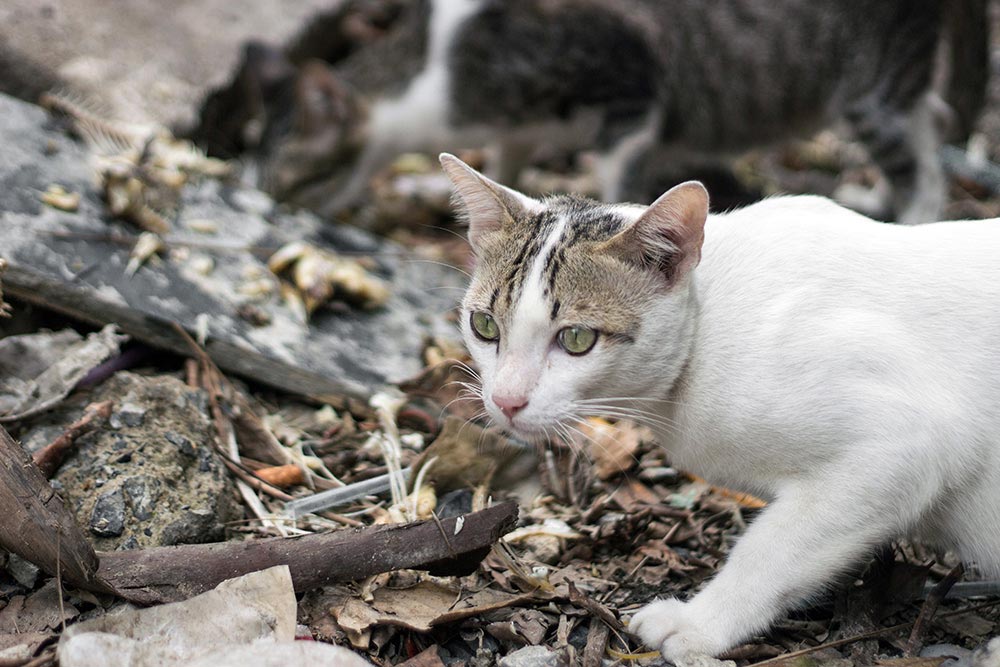
LIMITED SURVIVAL SKILLS
Although we do see our pets as animals with survival abilities that differ from ours, they are not wild animals. Most have known nothing else in their lives but indoor living, plentiful food, and a warm loving environment. The thought that leaving them behind in a disaster is okay because animals can fend for themselves is deeply flawed.
Remember, if it isn’t safe for you, it isn’t safe for your pets. You might not be able to return to your home for weeks, and in that time, the odds of your beloved cat ending up lost, injured, or dead is very high.
Here are some things you can do to include your pets in your emergency plan:
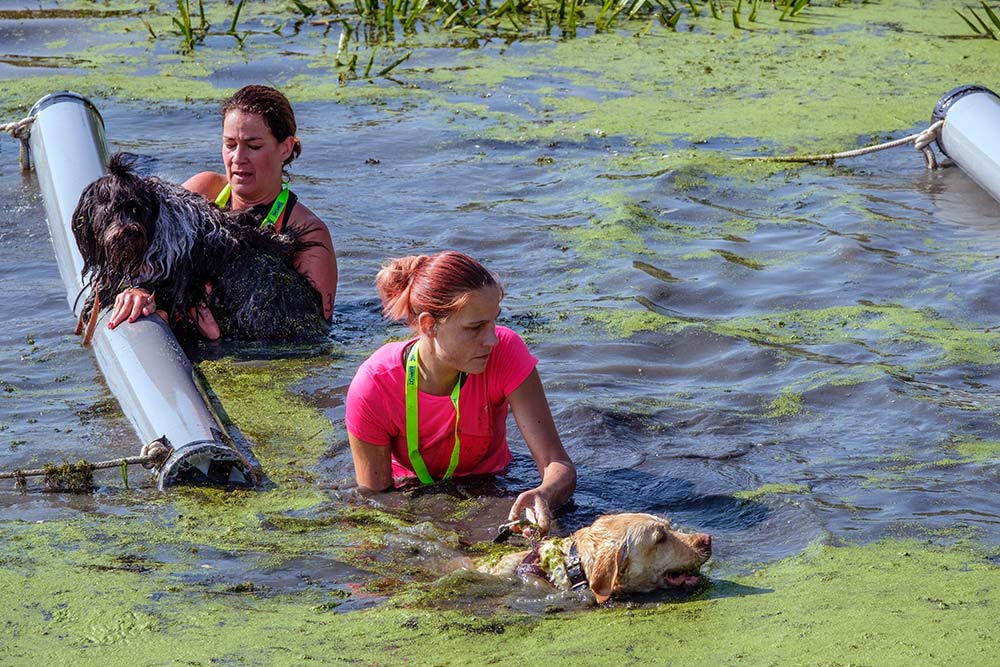
ID YOUR PET
Unlike hurricanes, most natural and manmade disasters strike without a moment’s notice. Given the appalling rate that Katrina survivors reunited with their pets, you can increase those chances by properly tagging your animal with a microchip. This can be done at most veterinarians and animal shelters, and should include your current information and several different ways to reach you (multiple cell numbers and email addresses at the minimum).
“It is important for pet owners to prepare a specific emergency plan that also includes their pets.”
Because the average person won’t be able to read a microchip, make sure Fido always wears a collar with an up-to-date tag. Having your cell number on the tag in addition to the pet’s name is paramount; consider adding a second cell number of someone that doesn’t live in your immediate area. They might not be affected by the emergency and could be in a better position to help.
READY YOUR PETS FOR TRAVEL
Much like having a go-bag for family members, consider building one for your pet. In it, collect together similar things you would for yourself: food and water for three days, pet-specific first aid materials, a secondary leash or harness (even for a cat), some treats, a chew toy or two, and a blanket. If you think you might be in close proximity to other animals, consider a muzzle for your dog.
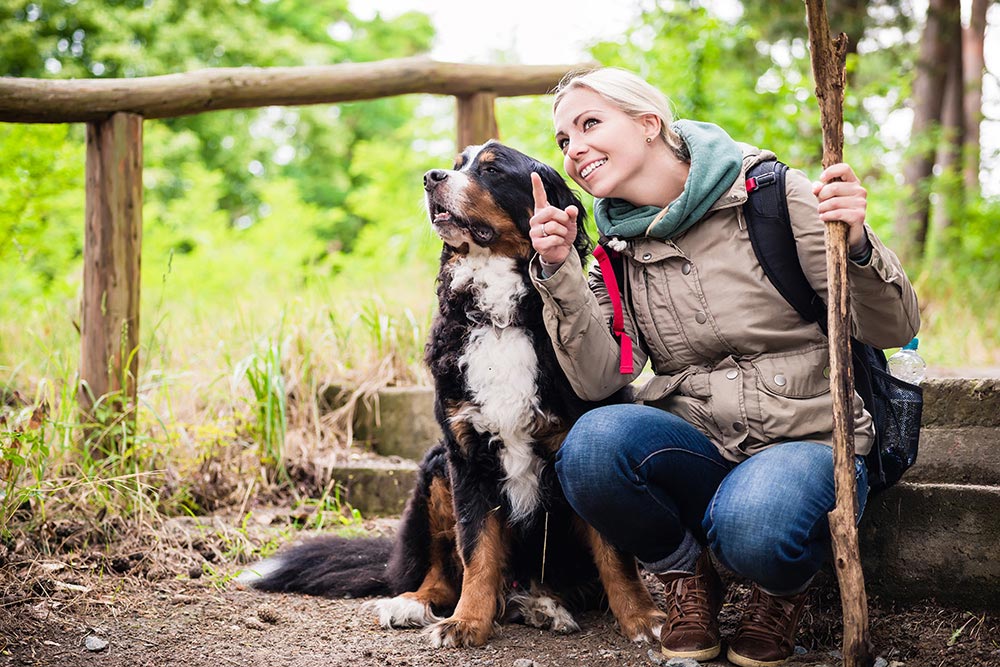
FIND PET-FRIENDLY SHELTER
Plan ahead for many kinds of emergencies by building a list of places that accept pets during an evacuation. Most hotels don’t allow non-service animals (even for displaced disaster evacuees), so before the disaster strikes, find a few out of your area (in multiple directions) that do accept pets. There are many websites that offer information for pet-friendly travel, such as petswelcome.com and bringfido.com.
It might be a better situation to make arrangements with friends and family outside of your immediate area if they could take in your pets (and you) in the wake of an emergency.
SHELTER IN PLACE
Much like having a newborn, you’ve got to pet-proof your house by removing anything that may pose a danger if you plan to be stuck inside for the foreseeable future. Stow any toxic chemicals or dangerous items that are usually sitting out. Block off any small spaces in which a frightened animal may try to hide. Make sure they can’t escape outside by blocking off any pet doors.
Some houses have tornado rooms or hurricane shelters built in, but if yours doesn’t or you don’t have a basement, find the room that is in the middle of your house, preferably without windows or outside-facing walls and make that your emergency safe room. Stock it with pet food, bedding, water, toys, and familiar items to your pet along with your family’s emergency gear.
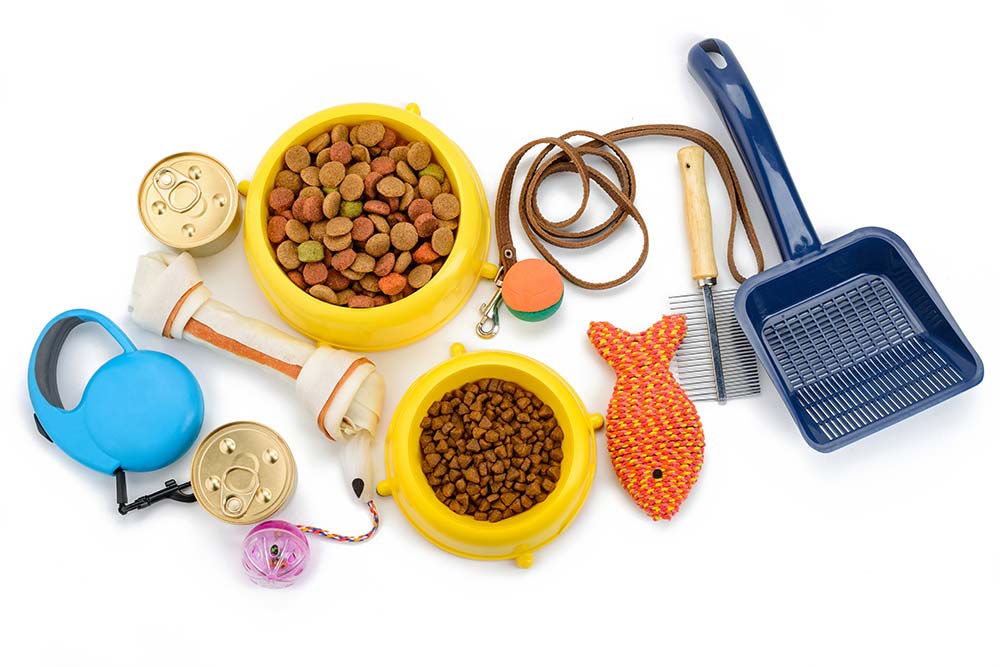
KEEP YOUR PET CALM
Emergencies can be loud affairs. Hurricanes are terrifically loud. Tornado sirens can be terrifying to animals. Earthquakes can be confusing. You won’t know how your pet will react until the time comes, but if you can’t evacuate and must stay home, do it with all members of the family in mind.
Consider a “thunder” shirt for your dog, and keep cats in carriers to help them be calm. Believe it or not, music has a calming effect on animals, so keep a few tracks on hand to play as a distraction.
BE READY FOR ANYTHING
Emergencies and disasters come in countless forms and in all sizes, and although we feel that, as humans, we can be prepared for anything, we also need to consider our pets. Likely, they are confused, scared, and are looking to you, the alpha, for leadership. Making preparations now might mean the difference between life and death for them if something unplanned were to happen.
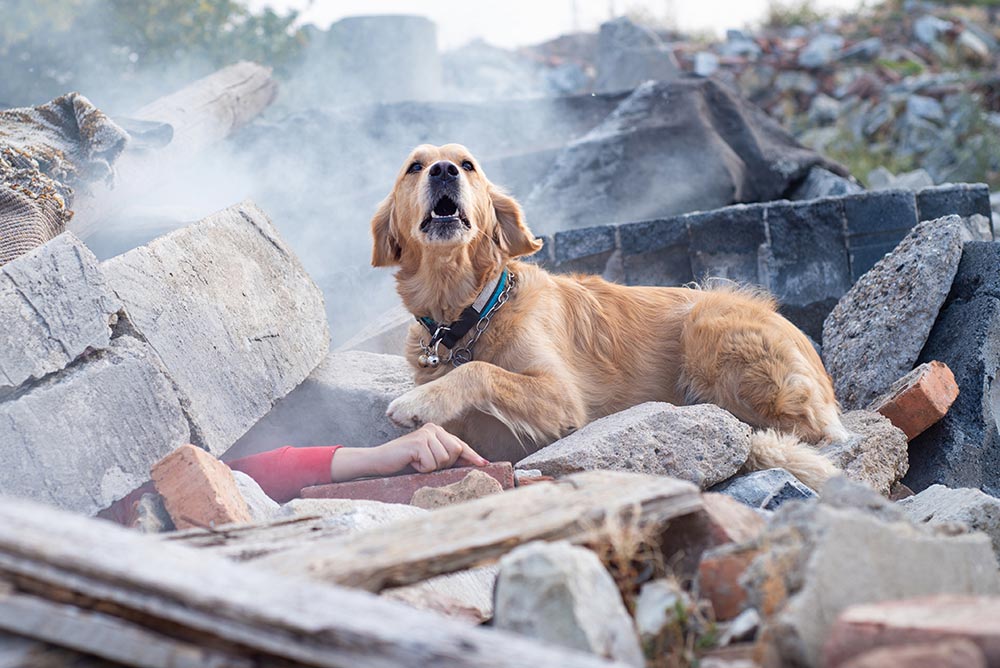
AFTER THE DISASTER
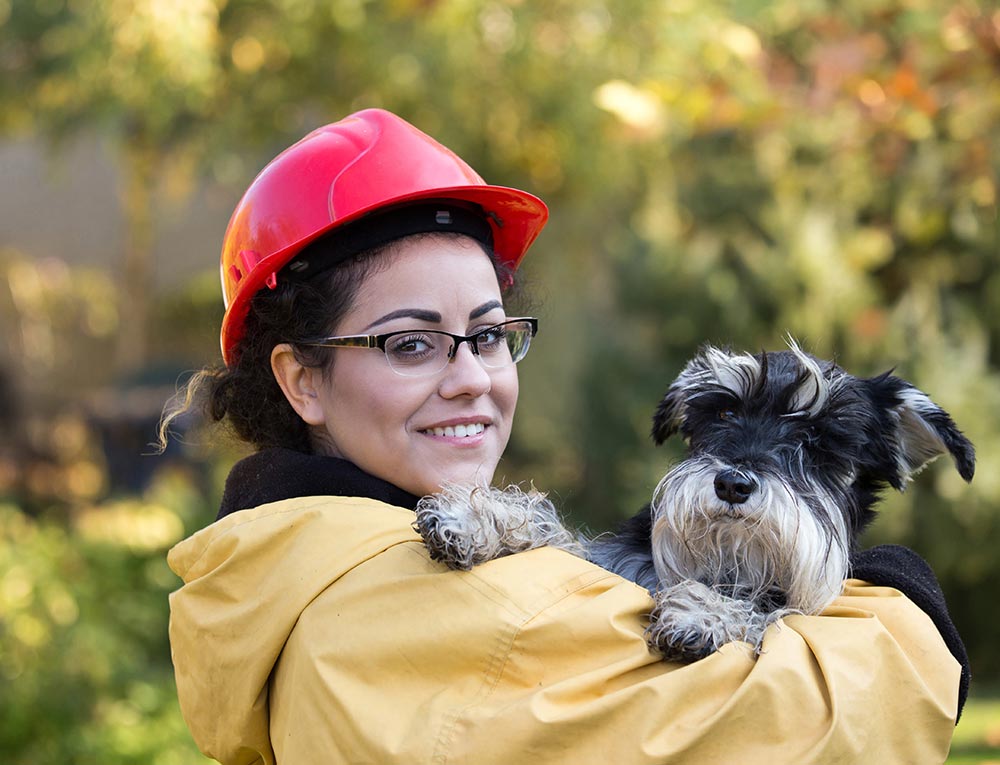
Disasters can easily make your neighborhood unrecognizable to animals, both in sight and scent, and that might mean it will be very difficult for them to adjust to the changes. Because your pet will likely be disoriented, don’t allow it to roam loose outside, as it might easily get lost. Keep it on a leash or make sure your backyard is secure. As well, there may be dangerous debris that could injure your pet.
Help to prevent behavioral problems. Animals crave routines—up at six, walk at four, dinner at five. If possible, maintain the normal schedule. Stress resulting from the unknown can lead to emotional outbursts that might be frustrating for you, so be patient until they adjust.
Other pet owners might not be as prepared as you. Their pets might escape from their homes and take refuge near yours. Wild animals might have taken up residence nearby too. So, take caution when exploring the outside. Displaced animals will likely be scared and defensive.
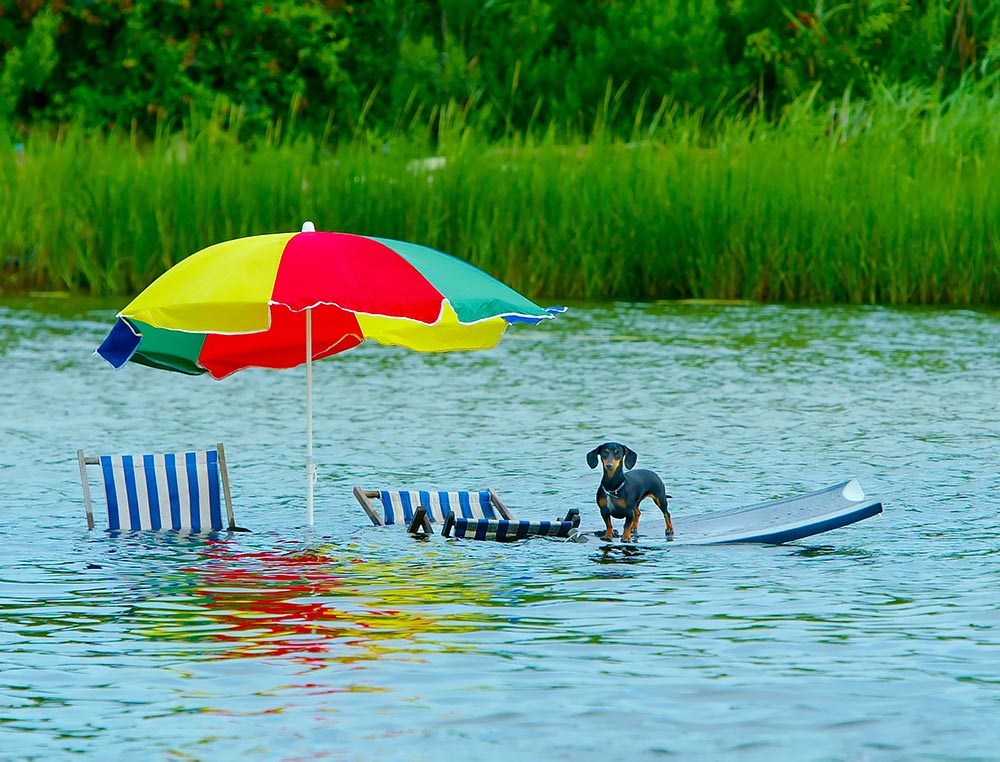
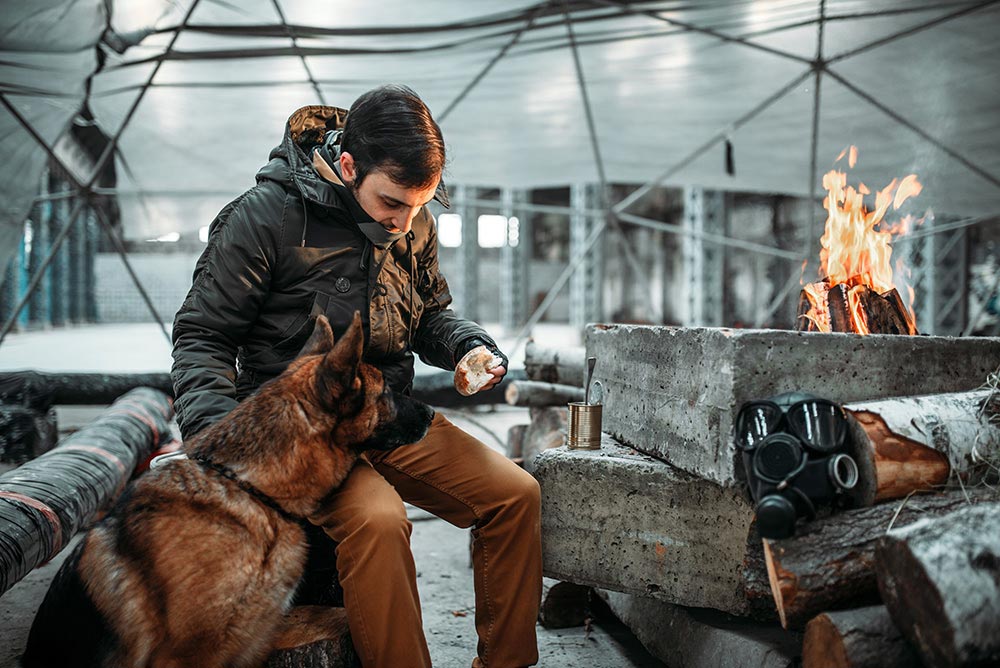
PET EMERGENCY CHECKLIST
- Dry food packed in labeled, zip-top bags and/or
- Canned pet food (check expiration date on can)
- Can opener, if needed
- Water – One gallon per pet per day for dogs and cats
- Tags on collars for dogs and cats
- Microchip information
- Bedding, towels, blankets
- Bowls for food and water
- Cage, carrier, or kennel for each pet
- Litter and litter box
- Trash bags
- Paper towels
- Muzzle
- Brushes for long-haired pets
- Leash
- Extra collar, harness
- Important Papers
Proof of vaccinations
Registration and licensing papers
List of possible emergency shelters
Current photos of each animal
First aid kit
Bandages and non-stick wound dressings
Scissors
Claw clippers
Styptic powder
Diphenhydramine for allergies.
Eye wash (sterile saline)
Cortisone cream
Triple antibiotic cream
Hydrogen peroxide
Probiotic, such as Lactobacillus
Pepto Bismol for diarrhea
Flea/tick medication
Current prescription medications
A version of this article first appeared in the May 2022 issue of American Outdoor Guide Boundless.

